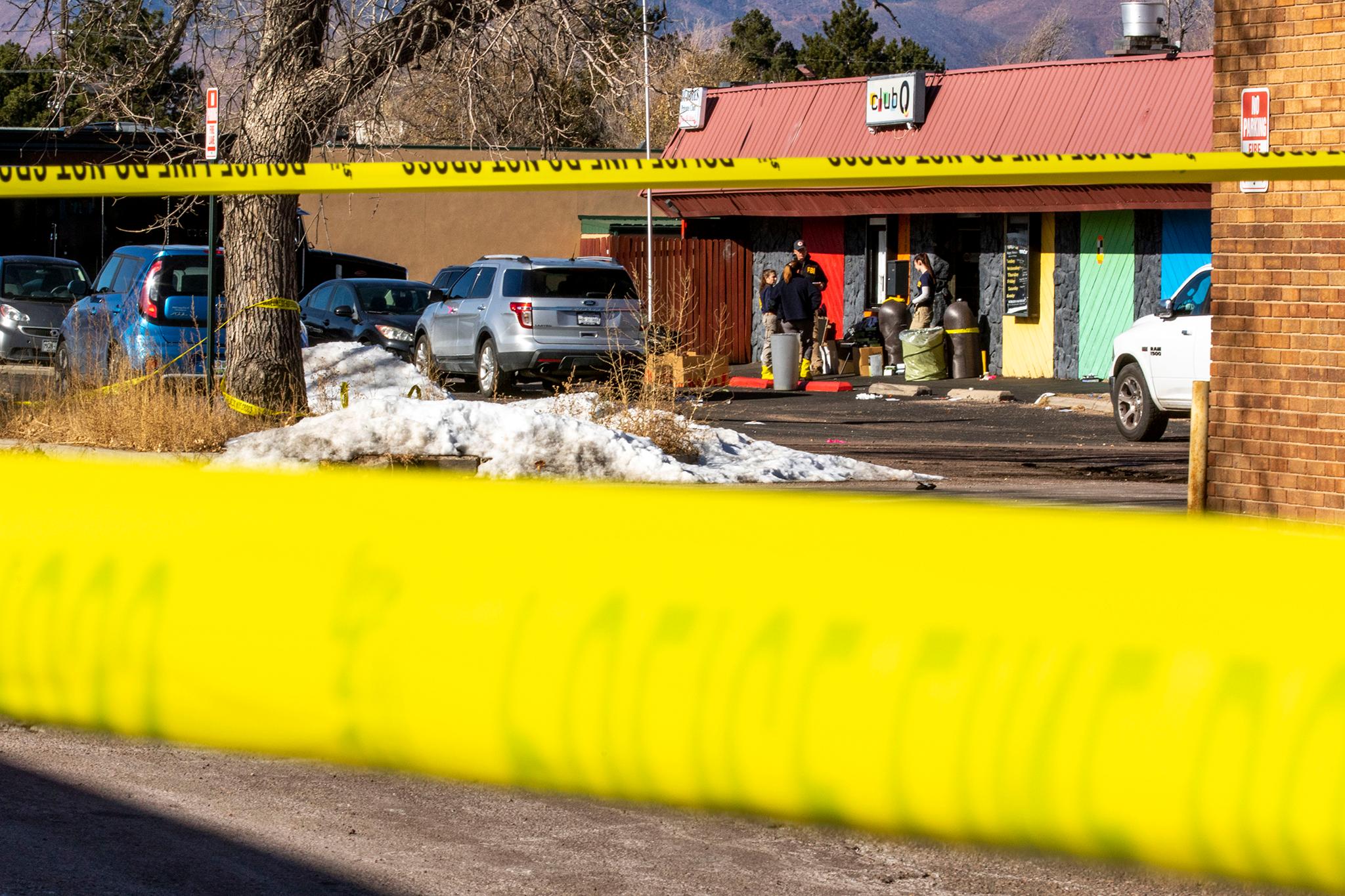
Colorado’s “red flag” law, passed in 2019, allows family members or law enforcement to request the temporary confiscation of firearms from people who pose a threat.
Now, the law is receiving renewed attention in the wake of a gunman’s attack that killed five people at Club Q, an LGBTQ nightclub in Colorado Springs. Democratic lawmakers have asked why the suspected gunman wasn’t the subject of a gun-removal order after a previous incident involving violent threats.
Here’s how the law works and what experts say about its use in Colorado.
How the law works
Red flag laws are meant to allow the temporary confiscation of firearms from people who are deemed to be an “extreme risk” to themselves or others. Under Colorado’s law, the orders can be requested by law enforcement officers or by a person’s family members, but they can only be issued by a judge.
“It’s really intended to intervene on that trajectory of violence,” said Shannon Frattaroli, a professor with the Johns Hopkins Center for Gun Violence Solutions.
The process often begins when the officer or family members files a petition for a temporary “extreme risk protection order,” or ERPO with the court. The petitioner has to provide evidence of the need for the temporary ERPO, signing an affidavit under oath and providing a “reasonable basis for believing” those facts exist.
The court then must hold a hearing within one business day. A judge will decide whether a “preponderance” of the evidence supports the case for removing weapons. That means the evidence must show the argument is “more probably true than not.”
If so, the judge can issue a temporary protection order, which stays in effect for a maximum of 14 days. The respondent then has to surrender their firearms to law enforcement. They also can sell or transfer the guns to a federally registered firearm dealer, and they must surrender any concealed carry permit.
The court then has to hold a second hearing to determine whether the order should be continued as a full ERPO beyond two weeks. (Petitioners can also request a full ERPO from the beginning, skipping the step of requesting the temporary ERPO. But they often begin with a temporary ERPO because it requires the courts to move more quickly and has a lower requirement for evidence.)
For a full ERPO hearing, the petitioner — again, members of law enforcement or the family — has to establish “clear and convincing” evidence that allowing the person to have guns would pose a “significant risk” to themselves or others. Respondents who don’t have an attorney are represented by a court-appointed attorney.
If the judge issues the extended order, it stays in effect for 364 days, and it can be renewed by the court. After it expires, law enforcement must return any guns they confiscated from the person.
The Colorado law went into effect on Jan. 1, 2020.
Colorado authorities do not use the law often
Nineteen states, plus Washington D.C., have “red flag” laws, according to the Johns Hopkins Center for Gun Violence Solutions.
So far, Colorado authorities have used the law far less often than in other states, according to an Associated Press analysis.
For example, Florida’s rate of issuance was ten times higher than Colorado’s. From April 2019 through the end of 2021, Colorado courts issued 151 orders, or about 3.3 per 100,000 adults, according to data from the AP.
Authorities in El Paso County have used the law even less — about 2.3 removals per 100,000 adults.
Political leaders in the county have resisted the use of the law. In 2019, county commissioners voted unanimously to become a “Second Amendment Preservation County.” The red flag law was being debated in the legislature at the time.
Commissioners at the time pledged to “actively resist the legislation,” arguing that it was unconstitutional because it did not allow enough due process before taking someone’s guns.
And the El Paso County Sheriff, Bill Elder, previously put limits on how his deputies would use the law.
In a 2020 statement, the Sheriff's Office said that deputies would only request removal orders and search for guns when they could find the “probable cause” of a crime. That’s a stricter standard than what’s required by the law, which is focused on the possibility of violence — and not whether someone has committed a crime. The office declined to comment for this story, saying the state’s law about criminal justice records prevented them from talking about the earlier case.
The policy was meant to “ensure that the rights of people to be free from unreasonable search and seizures, and to receive due process of law,” according to the statement. The right to bear arms is guaranteed in the Second Amendment, and some see the red flag as curtailing that right, since it allows guns to be taken away without a person being convicted of a crime.
Elder has not commented on the 2021 incident that apparently involved the suspected Club Q gunman.
Similar fights played out elsewhere in the state, including Weld County, where Sheriff Steve Reams said he would rather go to jail himself than confiscate someone’s guns. In all, more than half the state’s counties made similar declarations, CPR News reported.
But authorities in many of those counties later used the orders. Kaiser Health News reported this June that protection orders had been filed in 20 of the sanctuary counties.
When the petitions are filed, judges often approve them. In 2020, about 85 percent of petitions filed by law enforcement resulted in year long protection orders, CPR News reported.
Colorado’s law is similar to other states
The nation’s first red flag law was passed in 1999 in Connecticut, and their use spread more quickly after the massacre at Marjory Stoneman Douglas High School in Parkland, Fla.
The laws broadly follow the same model, but there are some variations.
For example, Colorado allows only law enforcement and family members to file the petitions. But several other states and Washington, D.C., allow a broader set of people to petition, variously including school administrators ; doctors; and, in California, employers and coworkers.
But the greatest differentiator between the states, according to Frattaroli, may be the level of enthusiasm among law-enforcement leaders.
Research into the effects of the laws is ongoing, since most implemented only in the last few years. But Frattaroli sees promise.
“This is a complex problem that has a lot of causes at its core, and it needs a lot of different solutions to turn this around,” the researcher said. “I do view ERPO as a promising solution that has the potential to make a big difference — again, if it’s implemented.”









